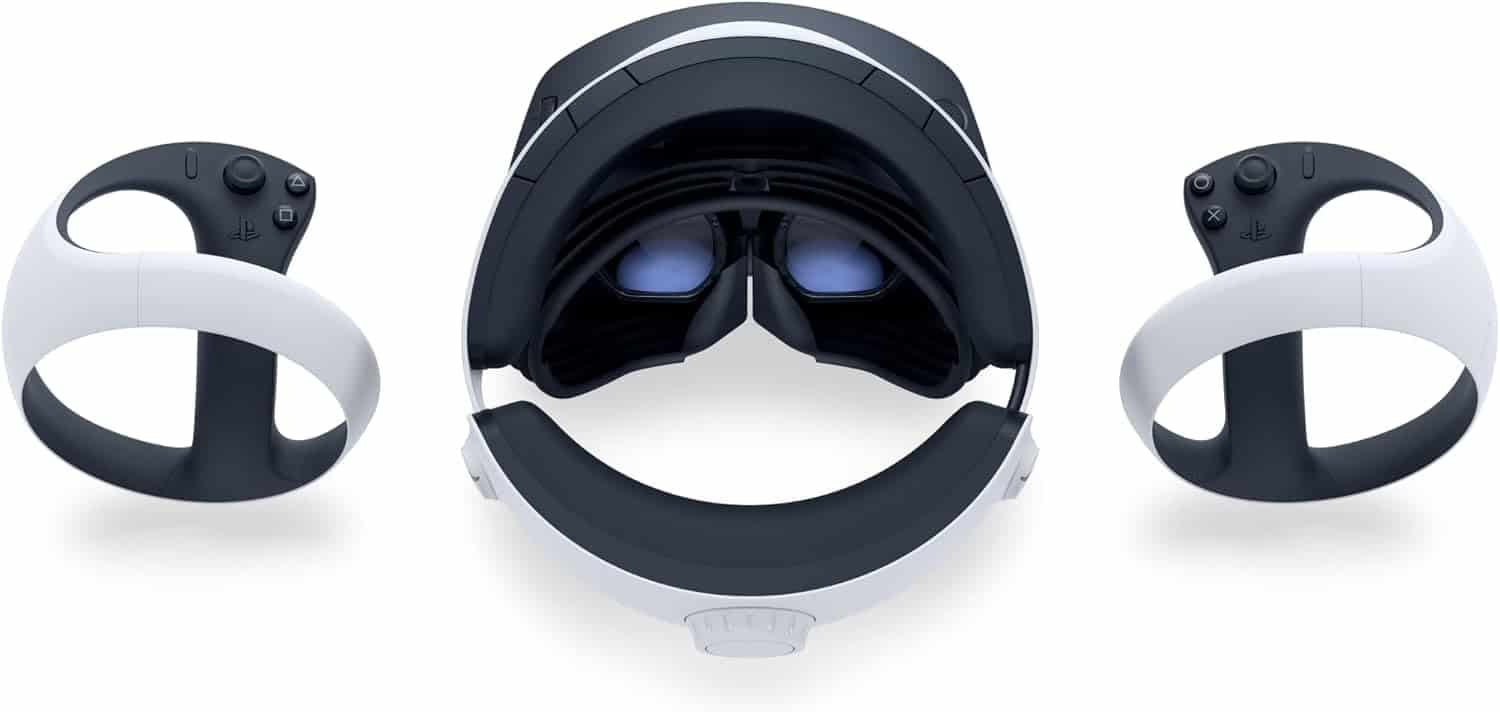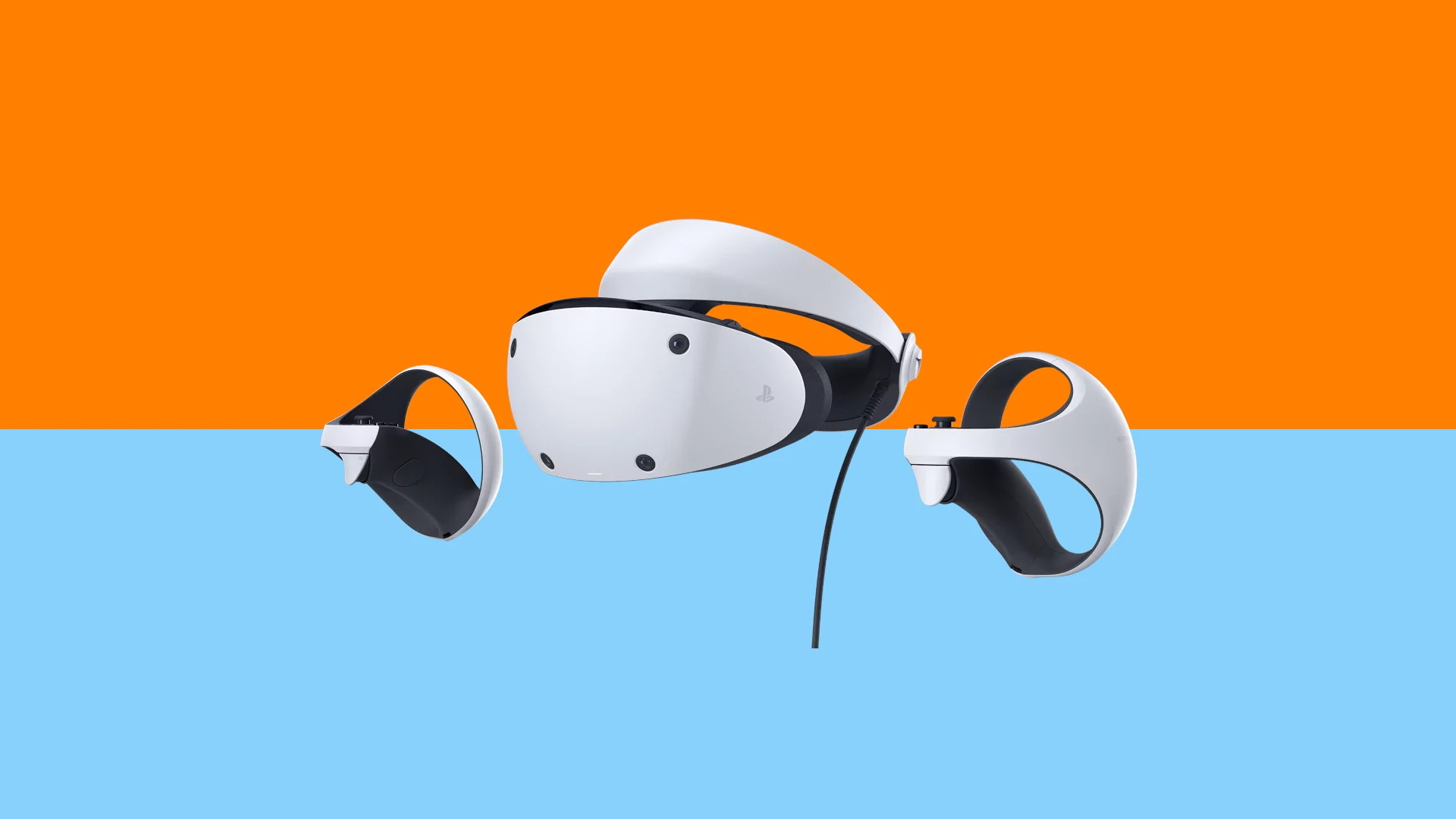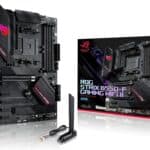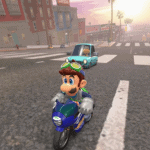Sony’s PS VR2 journey has seen significant developments recently as the company works to strengthen its virtual reality ecosystem. In a bid to attract more users, Sony has slashed the PlayStation VR2’s price from $549 to just $399.99, making this premium VR headset substantially more accessible to PS5 owners. The price reduction represents Sony’s commitment to expanding the PS VR2 platform beyond its current limitations, potentially transforming it from a niche product to a mainstream gaming peripheral.

The company has also taken steps to address one of the biggest criticisms of the headset by finally adding PC support for Steam. This crucial update allows the PS VR2 to function beyond the PlayStation ecosystem, significantly increasing its versatility and value proposition for consumers who own both PS5 consoles and gaming PCs. Despite these positive changes, Sony still faces challenges in building a more robust game library with exclusive VR titles that make the headset a must-buy for gamers.
Sony’s strategy appears focused on three main pillars: more affordable pricing, expanded compatibility, and building a stronger content library. The PSVR2 offers impressive features including immersive sensory capabilities that set it apart from competitors, but it still requires a tethered connection to either a PS5 or PC, unlike standalone options such as Meta’s Quest headsets or Apple’s Vision Pro.

Expanding the PS VR2 Ecosystem: What It Means for the Future of Virtual Reality
Sony’s commitment to growing the PlayStation VR2 ecosystem is clear, and these latest moves paint a promising future for VR on PlayStation. With a growing list of AAA titles, deeper PC integration, and new accessories aimed at enhancing user comfort and experience, PS VR2 is no longer just a niche peripheral—it’s becoming a more robust and competitive platform in the VR landscape.
A Broader Game Library Means More Reasons to Jump In
The new wave of PS VR2 games covers a wide range of genres, satisfying both hardcore gamers and casual users alike. From horror and survival to sci-fi exploration and fast-paced action, the catalog is becoming more diverse. Games like Resident Evil 4 VR and Metro Awakening are especially notable—not just for their names, but for how well their mechanics translate into VR, maximizing immersion and interaction.
Horizon Call of the Mountain continues to stand out as a flagship experience for the headset, while ongoing updates for titles like Underdogs show that developers are committed to keeping their VR titles alive and evolving. These updates matter, especially in the VR space where longevity is often a concern.
The addition of Beat Saber—one of the most successful VR titles of all time—signals that Sony is listening to the community and bringing the most requested titles to the platform. It’s also a hint that PS VR2 is ready to step into the spotlight as a mainstream contender.

PC Adapter Opens the Floodgates for More Content
Perhaps the most game-changing move is the PS VR2’s new PC adapter. This device dramatically increases the value of the headset by unlocking access to the massive content library available on platforms like SteamVR. While it’s not plug-and-play in the traditional sense—it requires a DisplayPort 1.4 connection and minimum PC specs—it significantly expands the use cases for PS VR2 owners.
The adapter may not support all advanced PS VR2 features on PC, like eye tracking or adaptive triggers, but the tradeoff is access to thousands of VR titles previously unavailable to console-only users. This blurs the line between Sony’s walled garden and the more open PC VR space, effectively transforming the headset into a hybrid device.
For users who already own gaming PCs, this means a single headset can now serve two ecosystems—PlayStation and PC—without needing a second device. That’s a big deal for cost-conscious gamers and VR enthusiasts alike.
Accessories That Enhance Comfort and Usability
Sony is also leaning into the lifestyle side of VR. Comfort mods, storage solutions, and audio enhancements are all part of the expanded ecosystem. The Pulse Elite Wireless Headset adds immersive 3D audio to VR titles, while mods like the CMP2 add needed ergonomic improvements for longer play sessions.
Simple additions like the Sense Controller Charging Station and PowerA Travel Case show Sony’s focus on reducing friction—both in usage and storage. These accessories aren’t just fluff; they’re quality-of-life improvements that make a noticeable difference in day-to-day use.
The Collective Minds display stand and charger offers a clean, all-in-one place to store and power your gear, which is a big plus for anyone trying to keep a tidy setup.
What Comes Next?
Sony’s expansion strategy signals that the company isn’t treating PS VR2 as a short-term experiment. Instead, it’s building a foundation for long-term growth—one that includes cross-platform compatibility, blockbuster game support, and user-centric hardware improvements.
What’s next could include more frequent first-party VR game announcements, deeper integration with PC gaming platforms, and a stronger presence in the competitive esports and VR content creation scenes.
For now, one thing is clear: PS VR2 is evolving into something much more capable than its launch version. And for anyone still on the fence, the future of PlayStation VR2 just became a lot more compelling.
Key Takeaways
- Sony has reduced the PlayStation VR2 price to $399.99 from $549, making the premium VR headset more accessible to consumers.
- The addition of PC support for Steam significantly expands the PSVR2’s versatility beyond the PlayStation ecosystem.
- Sony needs to secure more exclusive VR titles to strengthen the PSVR2’s value proposition against standalone competitors like Meta Quest.
Overview of PlayStation VR2
PlayStation VR2 represents Sony’s second-generation virtual reality headset designed specifically for the PlayStation 5 console. The system offers significant improvements over its predecessor in visual quality, tracking technology, and user experience.
Technical Specifications
The PlayStation VR2 boasts impressive technical capabilities that deliver a more immersive VR experience. It features two OLED displays with a combined resolution of 4K (2000 x 2040 pixels per eye), a significant upgrade from the original PSVR.
The headset supports HDR content, displaying vibrant colors with deeper blacks and brighter whites. Its 110-degree field of view creates a more natural peripheral vision experience for users.
PSVR2 incorporates eye-tracking technology that enhances both gameplay and visual fidelity through foveated rendering, which concentrates processing power on where the player is looking.
The headset runs at either 90Hz or 120Hz refresh rates, reducing motion sickness while providing smoother visuals. It also features haptic feedback built into the headset itself, adding another dimension to sensory immersion.
Design and Comfort
The PlayStation VR2’s design prioritizes user comfort during extended gaming sessions. Weighing approximately 560 grams (without cables), it’s relatively lightweight for a high-end VR headset.
Sony implemented an adjustable headband with a simple dial-based fit system that distributes weight evenly across the user’s head. The visor can be moved closer or further from the face to accommodate glasses wearers.
The headset includes built-in stereo headphones, though users can connect their own audio devices if preferred. A single USB-C cable connects the headset to the PS5, significantly reducing cable clutter compared to the original PSVR.
Ventilation ports help prevent lens fogging during intense gameplay sessions. The headset also features a sleek black-and-white design that matches the aesthetic of the PlayStation 5 console.
Compatibility and Support
Starting March 2025, PlayStation VR2 will be available at a reduced price of $399.99, down from its original $549 launch price in February 2023. This price drop makes the system more accessible to mainstream consumers.
Sony has expanded the headset’s ecosystem with a $60 adapter that enables PSVR2 compatibility with PCs, opening possibilities beyond the PlayStation ecosystem. This allows users to access PC VR content while using Sony’s hardware.
The PSVR2 comes with two PS VR2 Sense Controllers that feature adaptive triggers and haptic feedback similar to the DualSense controller. These controllers provide precise motion tracking through the headset’s cameras.
Recent reports suggest Sony is working on Apple Vision Pro controller support, potentially creating integration between PlayStation’s VR experience and Apple’s ecosystem. The company continues to expand compatibility options for the device.
PlayStation VR2 Gaming Experience
The PlayStation VR2 delivers significant technological upgrades that transform how players experience virtual reality on the PS5. Sony’s second-generation VR headset combines improved hardware with specialized software to create truly immersive gaming moments.
Exclusive VR Titles
PSVR2 boasts several standout exclusive titles that showcase the system’s capabilities. “Horizon Call of the Mountain” serves as the headset’s flagship game, offering players a chance to explore the post-apocalyptic world of Horizon from a first-person perspective. The game takes full advantage of the PSVR2’s enhanced controllers and haptic feedback.
Other notable exclusives include “Resident Evil Village,” which transforms the horror experience with its VR adaptation. Players can physically interact with the game’s environment, adding a new dimension to the fear factor.
“Metro Awakening VR” and “Alien: Rogue Incursion” provide intense, atmospheric experiences designed specifically for the PSVR2 hardware. Racing fans can enjoy “Gran Turismo 7” in VR mode, which delivers unprecedented immersion in cockpit view.
Skydance’s “Behemoth” represents another major exclusive, offering a physically interactive adventure with combat mechanics that utilize the headset’s precise tracking capabilities.
Enhanced Immersion Features
The PSVR2 introduces several technical improvements that significantly enhance immersion. Its OLED displays provide 4K HDR visuals with a 110-degree field of view, creating more realistic and detailed environments compared to the original PSVR.
Eye-tracking technology allows players to interact with games by simply looking at objects, adding a natural interaction method. This feature also enables foveated rendering, which focuses processing power on wherever the player is looking.
Haptic feedback in both the headset and controllers creates physical sensations that match in-game actions. Players can feel subtle vibrations during gameplay events, such as a monster approaching or an explosion nearby.
The headset’s ergonomic design reduces weight pressure, allowing for more comfortable extended play sessions. Its single-cord setup simplifies connection to the PS5, eliminating the complicated adapter setup required by the original PSVR.
Compatibility and Integration
Sony’s PlayStation VR2 ecosystem offers various connectivity options across different platforms. The headset’s compatibility features extend beyond its native PS5 environment, creating new opportunities for VR enthusiasts.
PS5 Integration
The PlayStation VR2 is designed specifically for the PS5 console, offering seamless integration with Sony’s flagship gaming system. The headset connects to the PS5 via a single USB-C cable, eliminating the complex setup required by its predecessor. This streamlined connection not only simplifies the user experience but also enhances data transfer speeds.
PS VR2 works exclusively with the PS VR2 Sense controllers and the DualSense controller family, including the standard DualSense and DualSense Edge controllers. This selective compatibility ensures optimal performance and functionality.
PS5 games designed for VR2 take full advantage of the headset’s advanced features, including eye tracking, haptic feedback, and adaptive triggers. These technologies create more immersive gaming experiences that respond directly to player actions and focus.
Backward Compatibility
The PlayStation VR2 does not offer native backward compatibility with original PSVR games. This limitation stems from the significant hardware differences between the two generations of VR systems.
Sony has addressed this issue partially by releasing selected PS VR titles with PS VR2 enhancements. These upgraded versions leverage the new hardware capabilities while maintaining the core gameplay experience of the original titles.
Players with extensive PSVR libraries should note that their original headsets remain compatible with PS5 through an adapter that Sony provides. This option allows gamers to access their entire PSVR collection while still being able to enjoy PS VR2 exclusives.
PC Support and Adaptability
Sony has expanded the PlayStation VR2 ecosystem by introducing PC compatibility through a dedicated adapter. This strategic move opens the headset to a broader range of VR experiences beyond the PlayStation platform.
The PlayStation VR2 PC Adapter enables easy connection between the VR headset and compatible computers. With this solution, users gain access to PC-based VR content, substantially increasing the library of available experiences.
This cross-platform capability represents a significant shift in Sony’s approach to virtual reality. By enabling PC support, Sony positions the PS VR2 as a more versatile device that can compete with dedicated PC VR headsets.
Recent reports suggest further expansion through potential collaboration with Apple, possibly integrating PS VR2 controllers with Apple’s Vision Pro headset. This collaboration could signal Sony’s broader strategy to extend its VR technologies beyond traditional gaming environments.
Market Positioning and Competition
Sony faces intense competition in the VR market as it works to establish PSVR2 as a premium VR experience. The company’s position relative to Meta’s dominance and its strategic approach compared to traditional gaming rivals shapes its path forward.
Comparison with Meta Quest 3
Sony’s PlayStation VR2 holds approximately 9% of the VR market share in 2024, making it the second-largest player behind Meta. This represents a challenging position as Meta continues to dominate the space with its Quest lineup.
The PSVR2 offers high-end specifications that leverage the PlayStation 5’s powerful hardware. These specs are comparable to market leaders and provide excellent visual fidelity for immersive gaming experiences.
However, timing may be working against Sony. By the time PSVR2 gained market traction, Meta was already preparing to launch the Quest 3, potentially undermining Sony’s technical advantages.
Sony differentiates its headset through exclusive titles like “Horizon Call of the Mountain” that showcase the device’s capabilities. These PlayStation exclusives represent Sony’s strongest competitive advantage against Meta’s more app-focused ecosystem.
Sony’s Strategy Against Microsoft and Nintendo
Sony approaches VR differently than its traditional gaming competitors. While Microsoft has largely avoided consumer VR hardware, focusing instead on mixed reality for enterprise applications, Sony has committed to building a consumer VR gaming platform.
Nintendo has taken a more experimental approach with products like Nintendo Labo VR, but hasn’t developed a dedicated high-end VR headset to compete with PSVR2.
The current market situation differs significantly from 2016 when the original PSVR launched. The first PlayStation VR benefited from general VR hype and limited competition, advantages the PSVR2 doesn’t enjoy.
Sony’s focus appears divided between various PS5 accessories like PlayStation Portal and the PSVR2. This split attention might be hampering the headset’s potential to gain market momentum against specialized VR competitors.
Pricing Strategy
Sony has implemented significant price adjustments for the PlayStation VR2 headset to stimulate sales and increase market penetration. The company’s revised pricing strategy addresses affordability concerns while maintaining product value positioning.
Price Cut and Discount News
Sony announced a permanent price reduction for the PlayStation VR2, dropping from the original $549 launch price to $399.99 in North America. This $150 price cut represents a substantial 27% reduction from the initial February 2023 pricing.
The new pricing takes effect in March 2025, marking the first official discount since the headset’s release over two years ago. European customers will see the price adjusted to €449.99, while UK buyers can purchase the unit for £399.99. Japanese consumers will pay ¥66,980 (approximately $447).
Industry analysts have noted this price reduction comes after reports of slower-than-expected sales for the premium VR peripheral. Sony hopes this more accessible price point will reinvigorate consumer interest and expand the VR2’s user base.
Retail Recommendations
Consumers interested in the PlayStation VR2 should consider several purchasing options to maximize value. The standalone headset at $399.99 represents the basic entry point, but bundle options may offer better overall value.
Bundle Options:
- Horizon Call of the Mountain Bundle – Includes the critically acclaimed VR title
- PlayStation Store Voucher Bundle – Provides store credit for purchasing additional VR content
For optimal value, buyers should compare retailer-specific promotions as some may offer additional incentives beyond Sony’s official pricing. Third-party retailers occasionally include bonus accessories or extended warranty options at competitive prices.
Potential buyers should note that growing the VR2 ecosystem remains a priority for Sony. The company is reportedly working to expand third-party support and cross-platform VR compatibility, which could enhance the headset’s long-term value proposition beyond the price reduction.
Sales Performance and Consumer Reception
PlayStation VR2’s market journey has been marked by fluctuating sales patterns and diverse user feedback since its launch. Sony has implemented several strategies to boost adoption of their virtual reality headset in a competitive market.
Sales Figures and Market Analysis
Sony’s PlayStation VR2 initially faced challenges with slower-than-expected sales following its February 2022 release. Reports indicated that Sony reduced production orders due to disappointing launch figures and unsold inventory concerns.
A dramatic turning point came when Sony implemented a substantial price reduction, dropping the headset from $549 to approximately $349. This strategic decision triggered a remarkable 2,000% increase in sales according to recent market data.
The price adjustment proved critical for market penetration in the premium VR segment where the PS VR2 competes with Meta’s Quest headsets and other alternatives. Sony confirmed selling nearly 600,000 units in the first six weeks after release, surpassing their internal projections.
The virtual reality headset market remains highly competitive, with PS VR2 positioning itself as a high-end console-based option. The sales recovery demonstrates price sensitivity in the VR market and shows Sony’s commitment to maintaining their position in the gaming ecosystem.
Consumer Feedback and Reviews
PlayStation VR2 has garnered generally positive reviews from both critics and consumers. Technical aspects receive particular praise, with many users highlighting the headset’s impressive specifications.
The device features an internal HDR OLED display supporting 2000 x 2040 pixels per eye, delivering exceptional visual quality. Review scores consistently place the PS VR2 in the 8.5/10 range, with technical performance being a standout factor.
Users especially appreciate the immersive experience provided by the headset’s advanced features:
- High-resolution display
- Improved tracking system
- Enhanced haptic feedback
- Wider field of view than the original PSVR
Critics note that while the hardware impresses, content availability remains a limiting factor for some potential buyers. The requirement of a PlayStation 5 console creates an additional barrier to entry compared to standalone VR headsets.
Despite these limitations, consumer sentiment generally acknowledges the PS VR2 as a significant advancement over its predecessor. The recent price reduction has also positively influenced perception of the product’s value proposition among potential buyers.
Future Developments
Sony’s commitment to virtual reality shows in their planned expansion of the PlayStation VR2 ecosystem. The company is focusing on both software partnerships and hardware innovations to strengthen their position in the VR market.
Upcoming VR Titles and Partnerships
Sony plans to expand the PlayStation VR2 library with new exclusive titles through strategic partnerships. The company is working with major game studios to develop VR versions of popular PlayStation franchises. These collaborations aim to address the current limited game selection that has hindered wider VR2 adoption.
Several AAA titles are reportedly in development specifically for the PS VR2. Sony is also creating incentives for independent developers to bring their games to the platform. This two-pronged approach should help diversify the available content.
A rumored partnership with a major film studio may bring interactive VR experiences based on popular movie franchises exclusively to PS VR2. This move would differentiate Sony’s VR offering from competitors like Meta’s Quest headsets.
Innovation in VR Technology
Sony’s R&D department continues to improve VR technology even after the PS VR2’s launch. Patents suggest the company is developing wireless capabilities for the PS VR2, addressing one of the biggest customer complaints about the current wired setup.
Haptic feedback enhancements are another focus area. Engineers are working on more sophisticated controllers that can simulate various textures and resistances. This would create more immersive gaming experiences in virtual environments.
Eye-tracking technology, already present in PS VR2, will receive software updates to improve its functionality and reduce processing requirements. These optimizations should improve performance in graphically intensive games.
Sony is also exploring weight reduction and comfort improvements for extended play sessions. Research indicates that user comfort significantly impacts VR adoption rates, making this a priority for future hardware iterations.
Extended Features and Accessories
The PlayStation VR2 ecosystem continues to expand with innovative technologies and complementary hardware. Sony has focused on enhancing user experience through advanced tracking capabilities and a growing selection of accessories designed to complement the core headset.
Hand Tracking and Eye Tracking Technologies
The PS VR2 significantly advances virtual reality interaction through its integrated tracking technologies. Eye tracking allows players to interact with virtual environments simply by looking at objects, creating more intuitive gameplay experiences. This technology enables foveated rendering, which optimizes performance by rendering higher quality graphics where the user is looking.
Hand tracking capability has been a notable missing feature compared to competitors like Meta Quest. According to search results, Sony’s headset was initially constrained by controllers rather than offering native hand tracking. This limitation may soon be addressed, bringing the PS VR2 in line with other premium VR platforms.
When implemented, hand tracking will allow users to interact with virtual objects without controllers, providing a more natural and immersive experience for certain applications and games.
Peripheral Devices and Accessories
The PS VR2 ecosystem supports various accessories that enhance functionality and comfort. Third-party manufacturers have developed headset stands that provide convenient storage solutions while protecting the device. These stands help organize VR setups and prevent damage to the headset when not in use.
USB connectivity enables the PS VR2 to interface with compatible peripheral devices. The system supports the PlayStation VR2 Sense controllers, which underwent extensive prototyping to deliver optimal haptic feedback and tracking precision.
Sony’s approach to peripheral development focuses on expanding gameplay possibilities while maintaining consistent quality. The company’s history suggests they may introduce first-party accessories over time, potentially including:
- Charging stations for controllers
- Custom face cushions for extended comfort
- Additional sensory input devices
- Carrying cases for transportation and storage
These accessories collectively strengthen the PS VR2’s position in the competitive VR market.
Frequently Asked Questions
Sony continues to expand and refine the PlayStation VR2 ecosystem with new games, features, and user experience improvements. The company has addressed many common user questions through official FAQs and ongoing development updates.
What are the upcoming title releases for PlayStation VR2?
Sony has confirmed that over 100 games are currently in development for the PlayStation VR2. This robust pipeline ensures players will have plenty of content to experience on the next-generation VR platform.
Several major titles are scheduled for release in the coming months, including enhanced versions of popular franchises and completely new VR experiences developed specifically for the PS VR2’s capabilities.
Some games will be available in physical disc editions, giving players options for how they want to build their PS VR2 library.
How does the PlayStation VR2 compare with other major VR headsets like the Meta Quest 3?
PlayStation VR2 offers several advantages over competitors, including 4K HDR visual fidelity, eye tracking technology, and the innovative PS VR2 Sense controllers that provide haptic feedback.
Unlike standalone headsets like Meta Quest 3, the PS VR2 requires a PlayStation 5 console but leverages its processing power to deliver more graphically intensive experiences.
The PS VR2’s integrated eye tracking enables features not commonly found in other consumer headsets, allowing for more intuitive menu navigation and enhanced gameplay mechanics.
What developments are being made to enhance the PlayStation VR2 user experience?
Sony has implemented three main modes of use for the PS VR2, giving players flexibility in how they engage with virtual reality content.
Regular firmware updates continue to refine the interface and tracking capabilities, with Sony actively responding to user feedback since the headset’s launch.
Developers are exploring innovative ways to utilize the headset’s eye tracking and haptic feedback to create more immersive and intuitive gaming experiences.
Will there be a bundle that includes the PlayStation VR2 with the PS5?
Sony has not yet announced an official bundle that includes both the PlayStation VR2 and the PS5 console.
Currently, the PS VR2 is sold separately from the PS5, requiring users to purchase both separately to enjoy the full VR experience.
Some retailers occasionally offer unofficial bundles that include both items, though these don’t typically come with any special pricing advantages over buying the items individually.
What improvements have been made from PSVR to PSVR2?
PS VR2 represents a complete overhaul from the original PlayStation VR, featuring significantly improved resolution, a wider field of view, and simplified setup with just a single cable connection.
The new PS VR2 Sense controllers replace the PlayStation Move controllers, offering more precise tracking and advanced haptic feedback similar to the DualSense controller.
Internal cameras on the headset eliminate the need for external tracking cameras, making the overall system more user-friendly and less cumbersome to set up.
Does Sony have plans to support 3D movie playback on the PSVR2?
Sony has not officially confirmed plans to support 3D movie playback on the PlayStation VR2.
The original PSVR offered 3D movie capabilities, but this feature has not been prominently discussed in Sony’s communications about the PS VR2.
Users interested in media consumption beyond gaming can currently use the PS VR2 for standard 2D viewing in a virtual theater environment, though expanded media capabilities may be added in future updates.







